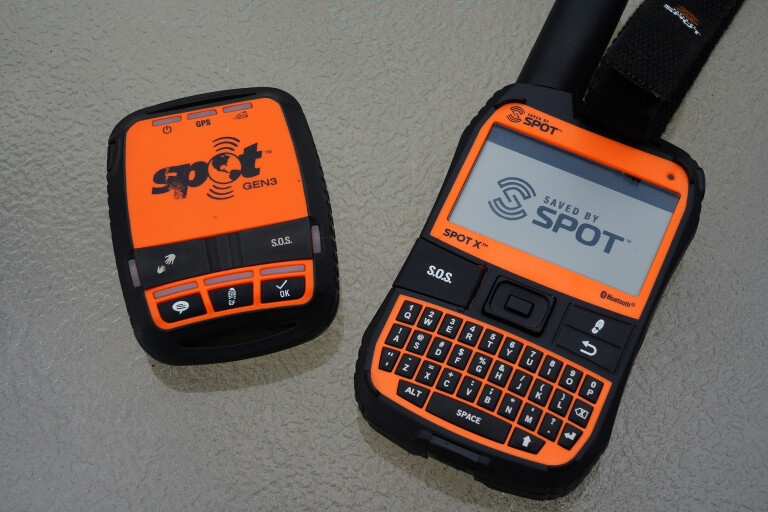
While the Spot Gen3 has served us well for a number of years, its limitations became apparent when we were camped with friends on the sands at Ningaloo where the only reliable communication was a sat phone or a two-way communicator. One of our friends had a Spot X, and we had a sat phone, but for quick contacts to family and friends the Spot X seemed to do the job and to do it easier.
So, what’s the difference between the Gen3 and the X?
The Spot Gen3 is a one-way satellite communicator and, as you can see from the pics, it’s smaller and lighter in size and weight. With this unit you have a choice of three messages. The OK message is set-up before you leave home via your laptop, where you choose the people it goes to by either email or phone saying something like, ‘We’re fine and having fun’.
The second message is something like, ‘We have an issue, but we can work it out’. The third message is the SOS, which ends up at the search and rescue facility in Canberra (via the Spot base in the USA) that will generate a full-scale search for you and is something you only activate in a real emergency.
There is no way anybody can send you a message with the Spot Gen3. The RRP for a Spot Gen3 is considerably cheaper – around $240 – while monthly costs were also cheaper. That’s if you can find one for sale! Within the last couple of weeks the ‘Findmespot’ website has them marked as ‘out of stock’; not sure if they are gone for good or what?
However, the Spot X is much more flexible and usable. These units are slightly bigger with a much more pronounced antenna than the Gen3 and feature a full QWERTY keyboard. The X provides two-way satellite messaging via the Iridium global network and features a unique USA mobile number allowing you to exchange SMS messages with mobile phone users or send and receive emails, no matter where you are located. You can also connect the Spot X via Bluetooth and the Spot X app to your mobile phone, for even easier communication.

There is a separate button to send an SOS message to search and rescue services and then you can message back and forth describing the emergency. However, the screen isn’t a touchscreen and you have to use the centre buttons to control the cursor to toggle between contact lists, message creation, etc.
As with all Spot devices you can choose between 21⁄2, 5, 10, 30 or 60-minute tracking intervals and track your adventures with Spot’s cloud base mapping, or navigate using the built-in compass and programmable waypoints – the latter I haven’t bothered with.
The unit reportedly features a 240-hour battery life (on the 10-minute tracking mode) and is IP67 rated against impact, dust and water ingress.
There are a number of access plans starting for around AU$21.50 a month, and this gives you 20 custom messages with free incoming messages. Tracking can vary from 10 to 60 minutes. Other plans give you more messages and other features.
So, what’s it like and is it worth it? We’ve been using the basic plan and find it’s acceptable in all the situations we’ve found ourselves in. We’ll probably be getting rid of our Iridium sat phone, as we are so pleased with this system. It’s cheaper and proven to be effective in keeping us in touch, whether just to say ‘hello’ or in case of something more dire.

COMMENTS